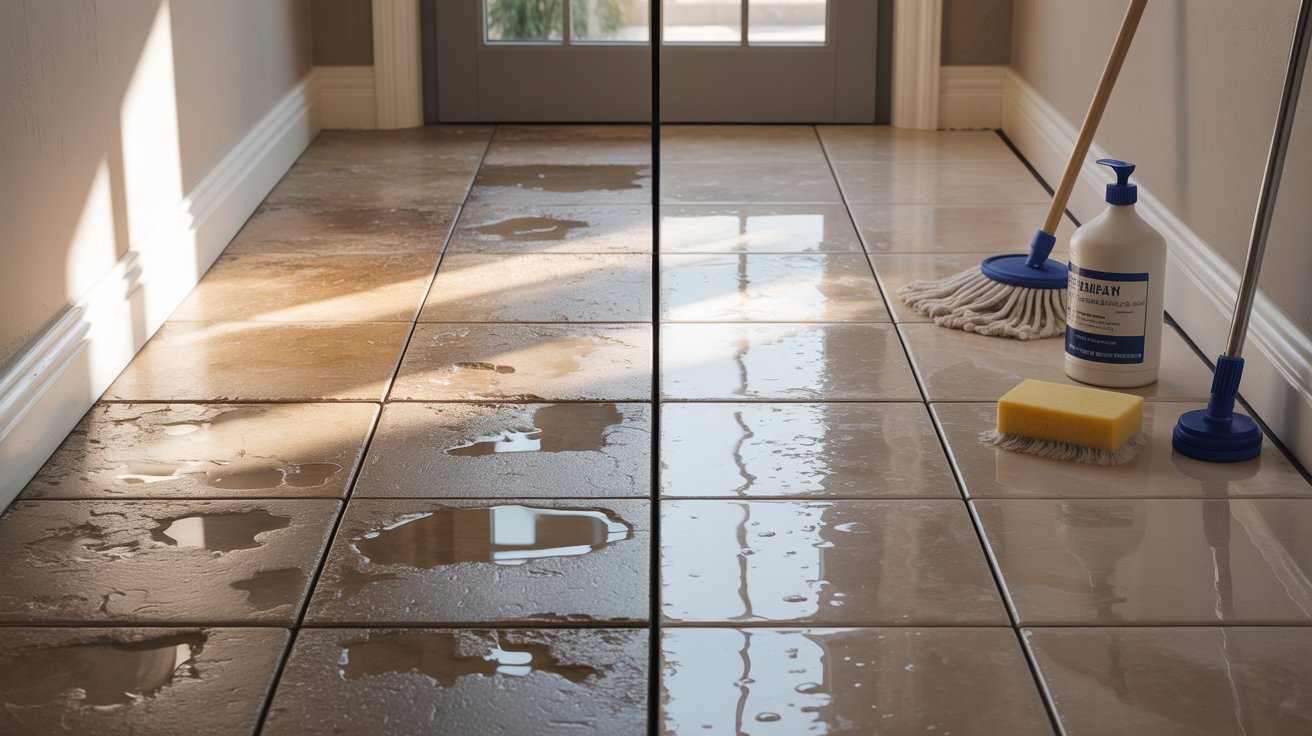The Science Behind Travertine Sealing: How It Works and What to Expect

Strong 8k brings an ultra-HD IPTV experience to your living room and your pocket.
Travertine is a natural stone that has been used in architecture for thousands of years. From Roman amphitheaters to modern kitchens, its warm tones and unique texture give it a timeless, earthy beauty. But while travertine is naturally stunning, it’s also quite porous—which means it needs some help to stay strong and stain-free. That’s where sealing comes in.
If you're a homeowner, renovator, or simply someone who wishes to protect their investment in stone, learning about how travertine sealing is done is the most important thing. What we're going to do in this article is demystify the science in simple English—how sealing your stone works, the kinds of sealers available, and what you can realistically expect out of the process.
Why Travertine Needs to Be Sealed
Travertine can appear solid, but it's actually teeming with minute holes and channels—similar to a sponge, naturally. It's this porosity that creates travertine's signature texture, but it also makes the stone susceptible to:
- Food, beverage, oil, and cosmetic stains
- Water damage, particularly in bathrooms or kitchens
- Mold and mildew in wet conditions
- Etching or dulling from acidic agents like vinegar or lemon juice
Without a proper sealer, liquids and grime can seep into the stone and leave behind permanent marks. Sealing is like giving your stone a raincoat—it protects it from the outside world while letting it breathe.
What Exactly Is a Sealer?
A sealer is a specially formulated liquid that’s applied to travertine to reduce its porosity and increase resistance to stains, moisture, and surface wear. Depending on the formula, the sealer either:
- Penetrates into the pores of the stone (so called a penetrating or impregnating sealer)
- Creates a thin protective coating on the surface (so called a topical sealer)
- Each does it a bit differently—and both have their benefits and drawbacks.
The Science: How Sealers Work
1. Penetrating Sealers
These sealers are absorbed in the travertine and act below the surface. They consist of molecules that are small enough to penetrate into the pores of the stone. Once in, they chemically bind to the stone or form a water-repellent barrier.
What this does for you: The sealer prevents stains from penetrating but doesn't make the stone appear artificial. You won't be able to detect any change in texture or luster. This is particularly well-suited for outdoor spaces or wet areas, such as showers or pool decks.
How it works, scientifically: The majority of penetrating sealers have silane, siloxane, or fluoropolymers as ingredients—molecules that reject water and oil. The materials form a hydrophobic (water-repelling) film within the stone, so liquids bead up on the surface rather than being absorbed.
2. Topical Sealers
Topical sealers remain on the stone's surface and form a thin, noticeable film. Some are composed of acrylics, polyurethanes, or waxes.
What that means to you: Topical sealers can alter the look of your stone. They tend to deposit a matte, satin, or glossy appearance, and they have the ability to deepen colors or make them look more saturated. But in turn, they could also wear away faster and have to be reapplied more often.
The science behind it: These sealers form a physical barrier that keeps liquids and debris from ever touching the stone. It's like a laminated shield. The catch? If water becomes trapped beneath the film or the sealer unevenly wears off, peeling or cloudiness can eventually result.
What to Expect During the Sealing Process
Sealing travertine is not difficult, but a few specific steps are required to make it work effectively. This is what generally takes place:
Cleaning the Surface
The travertine needs to be properly cleaned prior to sealer application. Grime, dirt, and previous sealers are cleaned off with stone-safe cleaners. If the surface is not clean, the new sealer will not stick properly—and it may trap residue behind.
Drying
Travertine must be thoroughly dry when sealing. Even slight moisture within pores may prevent a penetrating sealer from functioning adequately. Waiting at least 24 hours after cleaning is advised by the majority of professionals.
Application
Sealers are typically applied with a sponge, roller, or sprayer, depending on the surface. With penetrating sealers, the sealer is allowed to soak for a given period (typically 5–15 minutes), and then the excess is wiped off. With topical sealers, a thin, uniform coat is applied and allowed to dry.
Curing
After application, the sealer must be allowed time to cure. This may be anywhere from a few hours to a day, depending on the brand and type. While it's curing, it should be kept dry and heavy foot traffic avoided.
How Long Does Sealing Last?
- The duration that a sealer lasts depends on:
- The type of sealer that has been applied
- The place where it's located (indoor or outdoor)
- The traffic and exposure it receives
- How well the surface is cared for
On average:
- Sealants that penetrate last 3–5 years indoors and 1–3 years outside
- Topical sealers usually have to be replaced every 1–2 years, or more frequently in high-traffic areas
- You can check your travertine's seal by performing a quick water droplet test: spot a few drops of water on the surface. If it beads, your sealer is still active. If it absorbs, it's time to reseal.
What Are the Advantages of Sealing?
In short, this is what sealing actually does for your travertine:
- Stain Protection – Prevents wine, oil, coffee, and other liquids from penetrating
- Water Resistance – Prevents mold and mildew from forming in wet areas
- Durability – Prevents erosion and pitting on the surface over time
- Easier Cleaning – Makes it a breeze to clean on a daily basis
- Improved Appearance – Can enhance deeper colors and leave your stone with a polished appearance
Last Thoughts: The Unsung Stone Care Hero
Sealing is probably not the most thrilling aspect of your home design process, but it's one of the most critical. What's at play is science that's straightforward but potent: filling or covering up travertine's inherent pores helps lock in your stone from within.
Whether you opt for the matte, natural appearance with a penetrating sealer or the glossy, high-quality finish with a topical product, sealing protects your travertine from becoming dull, weakened, and high-maintenance over time.
So whenever you marvel at the soft sheen of your stone floors or the even surface of your bathroom tiles, keep in mind—there's a bit of science behind it, going quietly about keeping it all safe.
Note: IndiBlogHub features both user-submitted and editorial content. We do not verify third-party contributions. Read our Disclaimer and Privacy Policyfor details.







